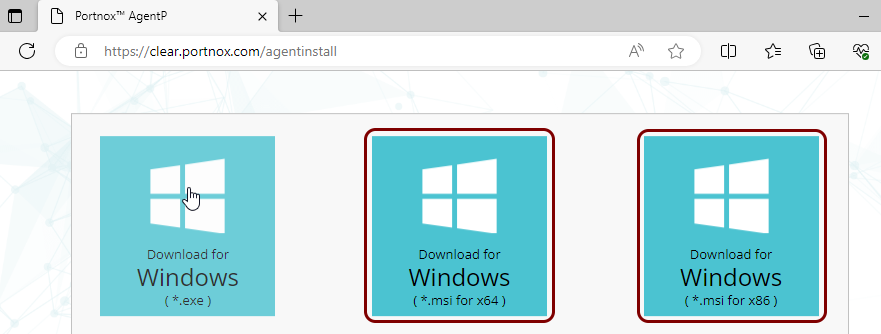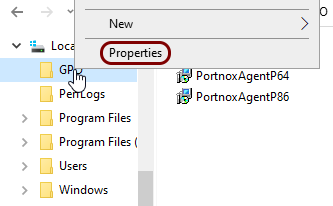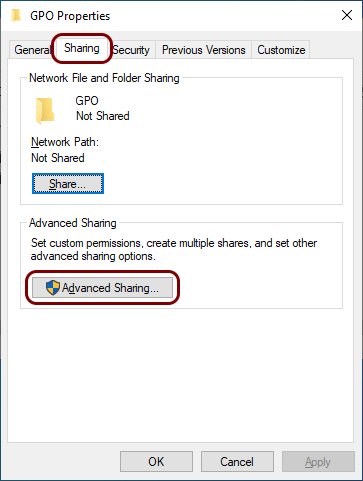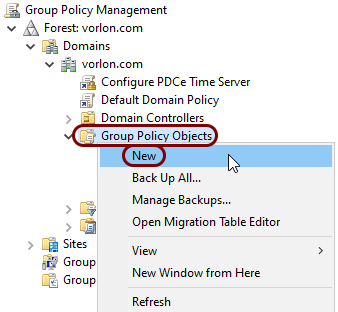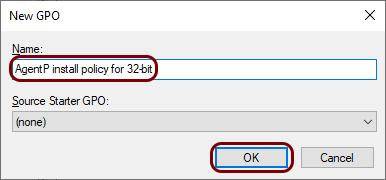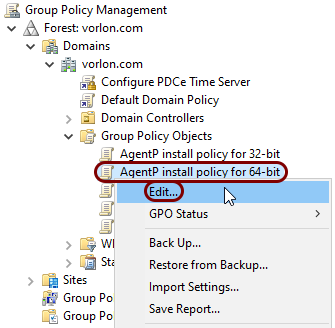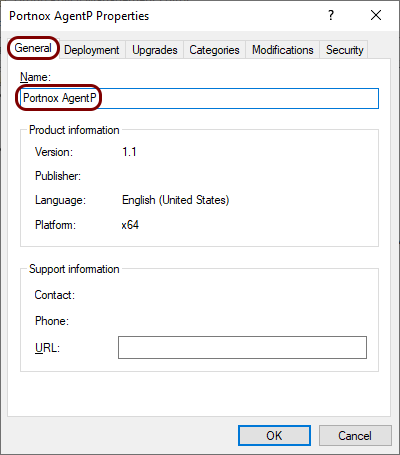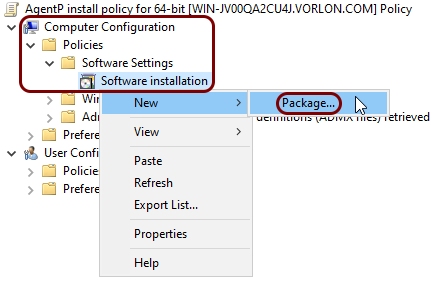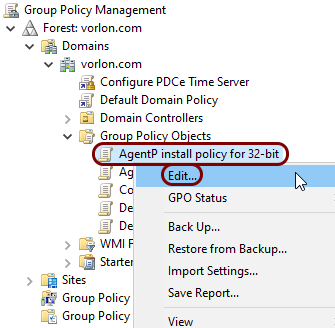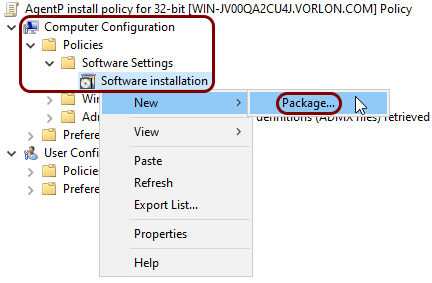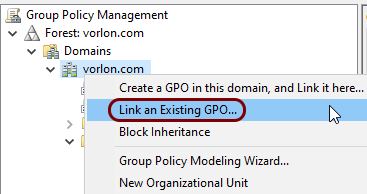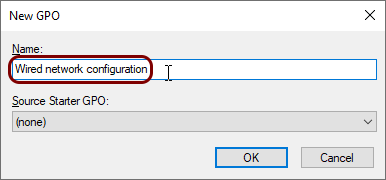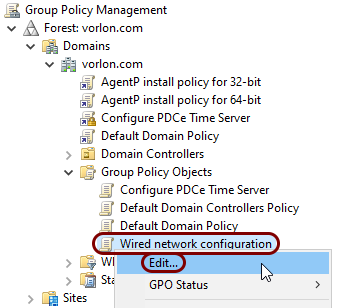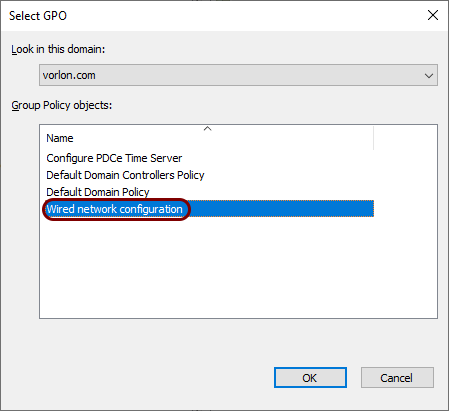Onboard Windows devices with AgentP using Group Policy
In this topic, you will learn how to deploy Portnox™ AgentP remotely on company devices using Group Policy.
Prerequisites:
-
The network must be based on Active Directory Domain Services (AD DS). That is, at least one server must have the AD DS role. To learn more about AD DS, see Active Directory Domain Services Overview on Microsoft Learn.
-
The devices that you want to manage must be joined to the domain, and users that you want to manage must use domain credentials to log on to their devices.
-
You must have permission to edit the Group Policy in the domain.
Perform the following tasks on your AD DS server.
Create and share a GPO folder
In this section, you will create a folder that contains AgentP installation files, and that will be used by other computers for installation.
Result: You shared a folder with AgentP installation files, which will be used by the GPO objects.

Create GPOs for 64-bit and 32-bit Windows
In this section, you will create a Group Policy Objects (GPOs) that will be used to automatically deploy AgentP on devices with 64-bit or 32-bit versions of Windows.
Result: You created two GPOs, one for 64-bit Windows, and one for 32-bit Windows.
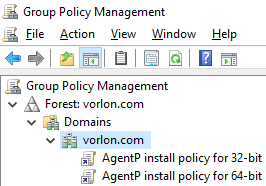
Create a software installation package for 64-bit systems and user assignment
In this section, you will create a software installation package that will be used to automatically deploy AgentP on devices with 64-bit versions of Windows and assign it to the users of these devices.
Result: You created a software installation package for 64-bit systems and user assignment.

Create a software installation package for 64-bit systems and device assignment
In this section, you will create a software installation package that will be used to automatically deploy AgentP on devices with 64-bit versions of Windows and assign it to these devices.
Result: You created a software installation package for 64-bit systems and device assignment.

Create a software installation package for 32-bit systems and user assignment
In this section, you will create a software installation package that will be used to automatically deploy AgentP on devices with 32-bit versions of Windows and assign it to the users of these devices.
Result: You created a software installation package for 32-bit systems and device assignment.
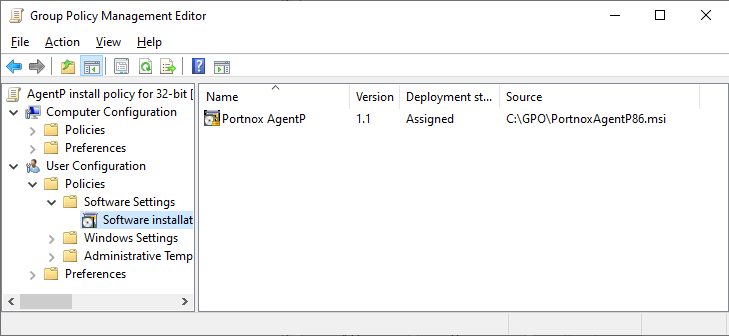
Create a software installation package for 32-bit systems and device assignment
In this section, you will create a software installation package that will be used to automatically deploy AgentP on devices with 32-bit versions of Windows and assign it to these devices.
Result: You created a software installation package for 32-bit systems and device assignment.

Link the GPOs to an organization unit or domain
In this section, you will link the two GPOs that you created earlier (for two Windows architecture options) to the organizational unit or domain, so that these policies can be enforced for all relevant devices for that organizational unit or domain.
Result: New devices logging on to this domain will have Portnox™ AgentP installed and configured automatically. If you selected specific organizational units to link the GPOs, this will only apply to these organizational units.

Optional: Create a GPO for wired network authentication
If you prefer to control your wired network configuration using a GPO instead of having it configured via AgentP, you can create a GPO object to configure the wired network.


